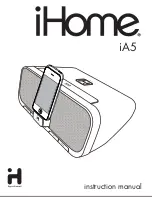
4
Bedroom
Child's
room
Living
room
Kitchen
Cellar
Workshop
1c
Smoke detector for minimum protection
Smoke detector for optimal protection
Installation locations with restrictions
Note
The alarm signal of the smoke detector is usually
loud enough to warn people. However, there may
be situations in which people cannot hear the
alarm signal (e.g. high noise levels, people with
a very deep sleep and/or hearing impairment,
people under the influence of drugs or alcohol,
etc.). If you suspect that this applies to people
in your environment, install additional special
smoke detectors.
4.2 Reasons for false alarms
Some rooms and environments may have a tendency
to trigger false alarms due to their typical use. This
includes disruptive factors such as:
• Water, cooking and other vapours
• Welding, soldering, cutting and other hot work
• Sawing and grinding work
• Construction work/ cleaning work with dust
generation
• Strong electromagnetic effects
• Significant temperature fluctuations, which can
lead to condensation of the humidity in the
smoke detector
• etc.
If these disruptive factors only occur temporarily -
such as during renovation - cover the smoke detector
or remove it for the appropriate period (see the
following warning).
If there are frequent false alarms caused by such
triggers - e.g. in the kitchen - adjust the installation
of the smoke detector accordingly if necessary.
Warning - renovation work, work in
the vicinity of the smoke detector
• Dismantle the smoke detector (see
7.5.
Dismantling the smoke detector
) or cover
it dust-free before you start renovation work.
• Ideally, keep it in a safe and dust-free place
for the duration of the work.
• Make sure that no paint is applied to the
smoke detector or tape remains on the
housing.
• Dust, paint, adhesive tape or other dirt
can impair the sensitivity of the trigger and
possibly render the smoke detector completely
inoperative and ineffective.
Cor-
ri-
dor





































